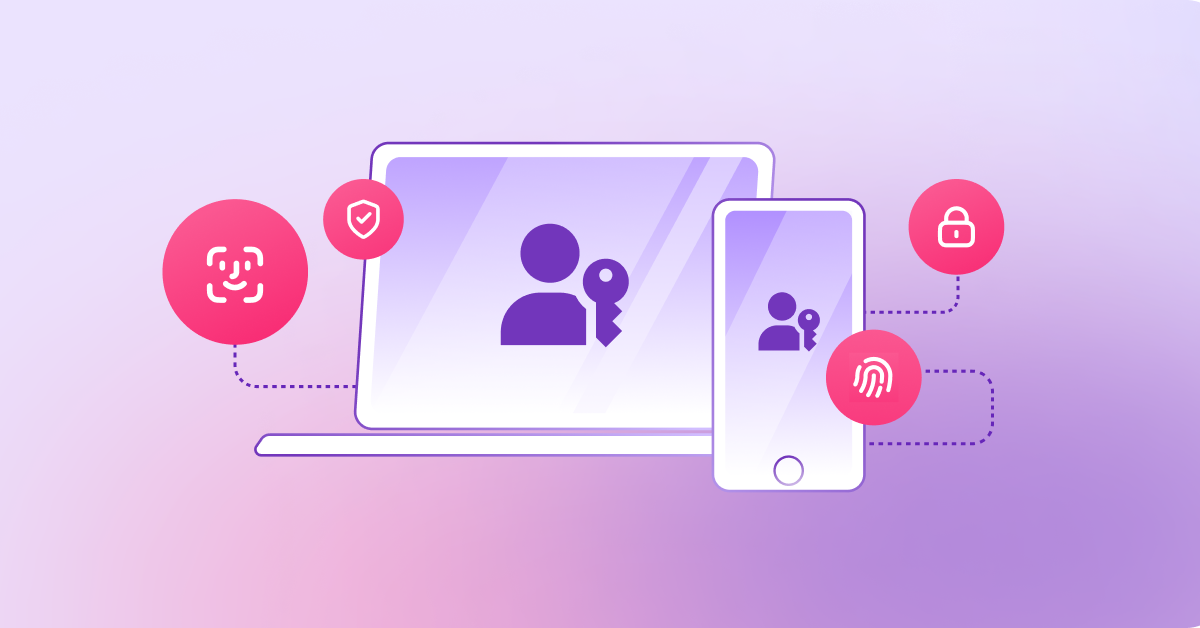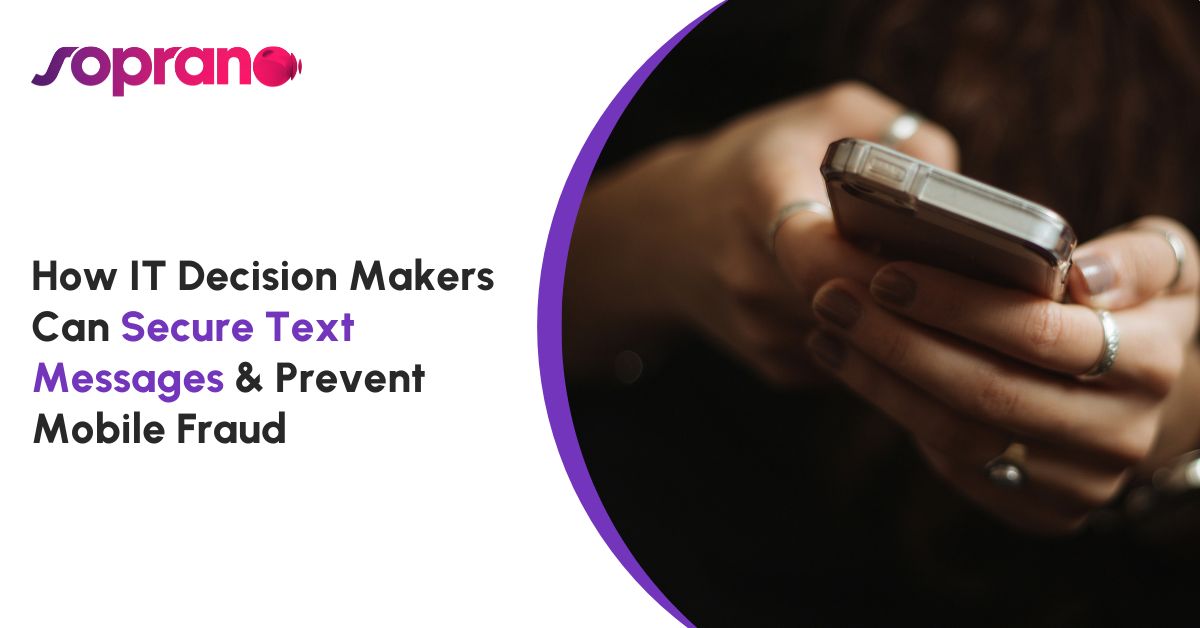Passwords have always been at the heart of online security, ensuring that users logging in are who they say they are.
But as technology has evolved, so has the demand for more secure and convenient authentication methods.
With most websites, apps and portals requiring password logins nowadays, it’s become nearly impossible for users to create and remember unique passwords for each one.
This often leads to one of the following:
- Users create weak passwords that are easy to hack.
- Users create strong passswords that are easy to forget.
Either way, both result in frustration and vulnerabilities for users and IT departments alike – undermining the purpose of passwords in the first place.
Luckily, there is a solution.
Passkeys – or passkey-based authentication – offer a passwordless alternative that provides a quicker, easier and more secure authentication method.
This blog post will explore what passkeys are, how they work, their benefits and whether you should start using them in your organisation if you’re not already.
Spoiler alert, you probably should…
What are Passkeys or Passkey-Based Authentication?
Passkeys, or Passkey-Based Authentication, is a modern approach to user authentication that eliminates the need for traditional passwords.
Instead of relying on passwords, which can be compromised, passkeys leverage cryptographic techniques to provide a more secure and user-friendly alternative.
When a user registers with a service that supports passkeys, their device generates a unique pair of cryptographic keys: a public key, which is stored on the server, and a private key, which remains securely on the user’s device.
During the login process, users verify their identity through biometric methods like fingerprint scanning or facial recognition, or by using a device PIN.
This biometric data never leaves the device, ensuring personal information remains secure and private.
Once verified, the device uses the private key to sign a challenge from the server, confirming the user’s identity without transmitting sensitive information.
Think of passkeys like a secure vault.
The public key acts as the vault’s combination lock, installed at the entrance of the vault (the server). In contrast, the private key is the unique combination that only the user knows — such as their fingerprint or face scan — that allows them to access their valuables.
Of course, this authentication process happens in a split second, enhancing security and improving the user experience without the need to remember complex passwords.
That’s just scraping the surface though, let’s look at more of the benefits passkeys can bring to your organisation.
What are the Benefits of Passkey as a Service?
Now that you understand what passkeys are, let’s explore some of the key benefits a passkey-based authentication solution can bring your organisation.
Passwordless Security
Passkey as a Service eliminates the reliance on passwords altogether, reducing the risk of breaches caused by weak or stolen passwords. With users authenticated through biometric methods or device PINs, you can can significantly enhance your organisation’s security posture.
Phishing-Resistant
Passkeys provide robust protection against phishing attacks since there are no passwords to steal. Even if a user is tricked into providing their credentials, attackers cannot gain access without the user’s unique device and biometric authentication.
Higher Success Rates
The simplicity of biometric logins leads to 4x higher success rates than passwords during authentication processes. This means fewer failed login attempts and a more seamless experience for users, ultimately resulting in increased engagement with your services.
Fewer IT Support Requests
By eliminating the reliance on traditional passwords, passkeys significantly reduce the number of password-related support tickets. This means your IT team can focus on more strategic initiatives rather than constantly addressing password resets and lockouts, leading to increased productivity across your organisation.
Cross-Platform Support
Passkeys are designed to work seamlessly across various devices and platforms, allowing users to authenticate effortlessly whether they’re using a smartphone, tablet, or computer. This flexibility enhances the overall user experience.
Fast, Seamless Access
Passkey authentication is quick and efficient, allowing users to log in within seconds. This streamlined process not only enhances security but also improves user satisfaction by eliminating the hassle of remembering complex passwords.
No Stored Passwords
Since no passwords are stored on servers, the risk of data breaches related to password databases is drastically reduced. This minimises the potential attack surface for cybercriminals, providing peace of mind for organisations and their users.
How Do Passkeys Work?
Passkey-based authentication revolutionises the way users log in by leveraging cryptographic technology and user-friendly biometric verification.
Here’s a breakdown of how the entire process works when you offer passkey-based authentication to users:
-
Step 1: Registration
-
Step 2: User Authentication
-
Step 3: Challenge and Response
-
Step 4: Secure Verification
-
Step 5: Access Granted
When a user registers with a service that supports passkeys, their device generates a unique pair of cryptographic keys. The public key is securely stored on your server, while the private key remains safely on the user’s device.
To log in, users verify their identity using biometric methods such as fingerprint scanning or facial recognition, or by entering a device PIN. This biometric data is securely processed on their device and never leaves it, keeping personal information private and secure.
Once authorised, your server sends a unique challenge to the user’s device. The device uses the private key to sign this challenge, creating a secure response that proves the user’s identity without transmitting sensitive information.
The signed challenge is sent back to your server, which uses the public key to verify the signature. If the verification is successful, the server confirms the user’s identity and grants access.
Upon successful verification, the user is granted access to your service. This entire process occurs in seconds, providing a fast, secure, and hassle-free login experience that enhances user satisfaction and reduces friction.
Why Should You Start Using Passkeys?
Transitioning to passkeys can fundamentally enhance the way your organisation approaches user authentication.
At a time when data breaches are increasingly common, moving away from passwords mitigates vulnerabilities associated with traditional login methods.
This proactive approach not only safeguards sensitive information but also reflects a commitment to robust security measures.
On top of that, passkeys simplify the login experience for users, making access to your services quicker and frictionless.
We’ve all experienced One-Time Passwords going to old phone numbers or password reset requests being sent to email inboxes you no longer have access to.
We appreciate the need for these processes, but sometimes they aren’t practical and can have the opposite effect.
In a nutshell, passkeys enhance security and streamline your login experience, making user authentication simpler and more robust for your organisation.
Passkey FAQs
Are passkeys better than passwords?
Yes, passkeys are more secure and user-friendly than passwords. They eliminate the need to remember complex passwords, reduce the risk of phishing attacks, and enhance overall security through biometric verification and cryptographic methods.
How secure are passkeys?
Passkeys are highly secure, leveraging public-key cryptography. Since they don’t involve shared secrets like passwords, they are resistant to phishing, brute-force attacks, and data breaches, significantly improving user authentication security.
Where are passkeys stored?
Passkeys are stored locally on the user’s device in a secure enclave or keychain, while the public key is stored on the service’s server. This ensures that sensitive private keys remain inaccessible to unauthorized parties.
Can passkeys be used across different devices?
Yes, passkeys can be used across different devices that support them, as long as users are signed into their accounts on each device. This enables seamless authentication on multiple platforms while maintaining security and user convenience.
What happens if a user loses their device with the passkey?
If a user loses their device, they may be able to recover their passkey through backup methods, like another device or account recovery options. It’s essential to implement recovery processes to mitigate potential access issues.
Can a hacker access passkeys on a stolen phone?
While physical access to a stolen phone poses a risk, passkeys are protected by biometric authentication or device PINs. Without these credentials, a hacker cannot access the stored passkeys, providing an added layer of security.
Soprano’s Passkey as a Service
Soprano Passkey as a Service offers a revolutionary, passwordless authentication solution that secures your platforms using device-based biometrics and public-key cryptography.
By eliminating passwords and utilising advanced authentication methods like fingerprints and facial recognition, Soprano ensures that your business stays secure from phishing attacks, credential theft, and other cyber threats.
Want to know more about Soprano’s Passkey as a Service? Get in touch with us for a personalised demo and we’ll show you how passkeys can provide your users with a secure, frictionless authentication experience.




